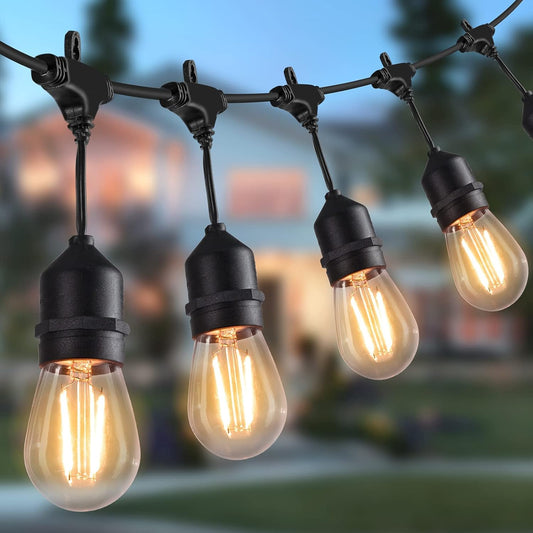Troubleshooting and Solutions for Outdoor LED String Flashing Malfunctions
When outdoor LED lights malfunction during use, they may flash continuously or intermittently. This usually does not seriously affect usage but affects lighting effects, such as only a few LEDs flashing. This article will analyze the situation of LED flashing faults.
1. Power adapter (filter capacitor) malfunction causing LED light to flash
The LED bead does not match the LED driver power supply. Normally, a single 1W bead can withstand an incoming current of 280-300mA and a voltage of 3.0-3.4V. If the bead chip is not of sufficient power, it will cause the light source to flicker. If the current is too high, the bead will turn on and off as soon as it cannot withstand it. In severe cases, the gold or copper wire embedded in the bead will burn out, causing the bead to not light up. It may be that the driver power supply is broken, as long as it is replaced with another good driver power supply, it will not flash anymore.
2. Excessive temperature causes LED lights to flash
If the driver has an over temperature protection function, but the material and heat dissipation performance of the lamp cannot meet the requirements, the over temperature protection of the driver will flash and turn when it starts working. For example, if the housing of a 50W floodlight is used to assemble a 100W lamp, the heat dissipation work will not be done properly.
3. Poor contact of lamp beads
If the outdoor light has a flicker frequency of one on and one off, it means that the lamp has been flooded. The consequence is that it will flash and then not light up. The light bulb and driver are broken. If the waterproof of the driver is done well, only the light bulb is broken, and the light source can be replaced.
If the light flashes after turning off, the first thing to do is to confirm the wiring problem. The most likely problem is the neutral wire controlled by the switch. At this time, it should be corrected in a timely manner to avoid danger. The correct approach is to control the live wire with the switch and connect the neutral wire to the light.
If there is no problem with the circuit, it is possible that the LED light has generated self induced current. The simplest method is to buy a 220V relay and connect the coil in series with the light bulb to solve the problem.
The LED bead does not match the LED driver power supply. Normally, a single 1W bead can withstand a current of 280-300mA and a voltage of 3.0-3.4V. If the bead chip is not of sufficient power, it will cause flickering of the light source. If the current is too high, the bead will turn on and off as soon as it cannot withstand it. In severe cases, the gold or copper wire embedded in the bead will burn out, causing the bead to not light up.





